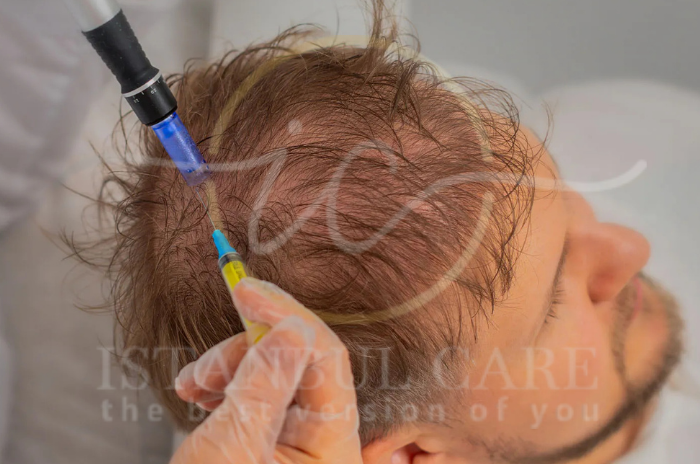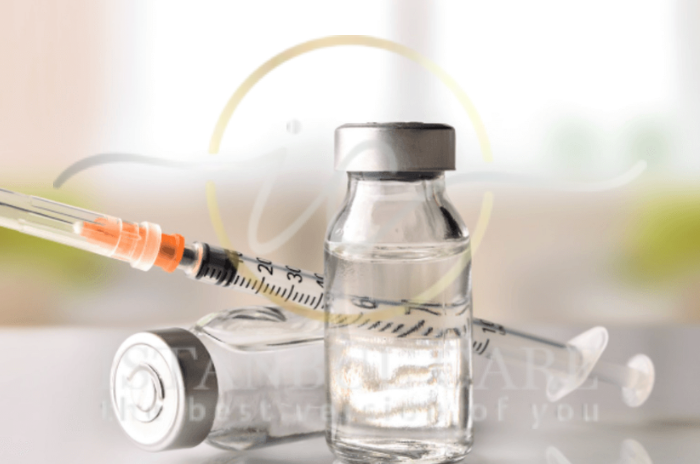
What Are Peptides for Hair Growth?
Peptides are mini-proteins (typically 2–50 amino acids) designed to send targeted biological signals. In hair care, formulations aim to:
Encourage follicles to stay longer in anagen (growth) phase
Support scalp microenvironment (collagen/elastin around follicles)
Reduce micro-inflammation that contributes to miniaturization
Improve blood flow and nutrient delivery to follicles
Where you’ll find them:
Topical serums/lotions: leave-on solutions with single peptides or blends
Adjunct ingredients: peptides combined with botanical extracts or vitamins
Clinic/office preparations: compounded peptide solutions applied via microneedling or mesotherapy protocols
Peptides are adjuncts. They tend to work best with evidence-based therapies like minoxidil, anti-androgen strategies, low-level laser therapy (LLLT), PRP, and scalp-care routines.
How Do Hair-Growth Peptides Work?
Peptides don’t all act the same. Common mechanistic pathways include:
Signal modulation: Some peptides bind cell receptors and upregulate growth factors (e.g., VEGF) that support follicle function
ECM (extracellular matrix) support: Matrikine-type peptides can encourage collagen and anchoring proteins around follicles
Micro-inflammation control: Certain peptides soothe the scalp and may reduce cytokines linked to miniaturization
DHT-related environment: A few peptide complexes are paired with botanicals that may modulate 5-alpha-reductase activity
Copper-binding actions: Copper peptides can aid tissue remodeling and angiogenesis, potentially benefiting follicle nutrition
Peptides primarily act as messengers that tell follicle-related cells what to do—grow, repair, or calm down—rather than functioning like hormones or drugs.
Benefits of Peptides for Hair Growth
Potential benefits (as adjuncts in a comprehensive plan):
Support for density/volume: gradual improvement in hair fiber thickness and fullness
Scalp barrier and comfort: better hydration, reduced itching or irritation for sensitive scalps
Breakage reduction: ECM support and conditioning can strengthen hair shafts
Compatibility: peptides can be combined with minoxidil, LLLT, PRP, and gentle microneedling
Cosmetic finish: some peptide serums improve shine and manageability during regrowth
Results are usually gradual (8–12+ weeks). Consistency and a multi-pronged plan drive outcomes.

Speak with our expert Hair Transplantation specialists

Speak with our expert Hair Transplantation specialists
We’re ready to answer your questions
Frequently Asked Questions
When choosing a shampoo, consider your hair type and concerns. If you have dry hair, opt for moisturizing shampoos. For oily hair, choose clarifying or volumizing shampoos. If you have a sensitive scalp, look for gentle, sulfate-free shampoos.
Foods rich in protein, vitamins (A, C, E), and omega-3 fatty acids are great for hair health. Include eggs, fish, nuts, seeds, and leafy greens in your diet to promote strong, shiny hair.
For most hair types, washing your hair 2–3 times a week is sufficient. Washing too frequently can strip your hair of its natural oils, while infrequent washing can lead to product buildup.
A good daily hair routine includes shampooing and conditioning (2–3 times a week), using a lightweight hair oil, and protecting your hair from heat styling. Regularly massage your scalp to promote circulation and keep your hair nourished.

